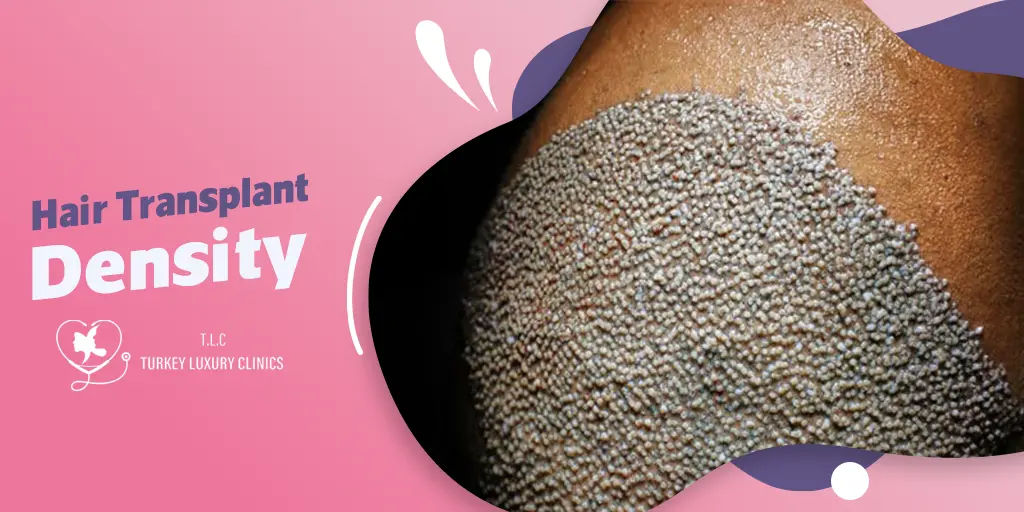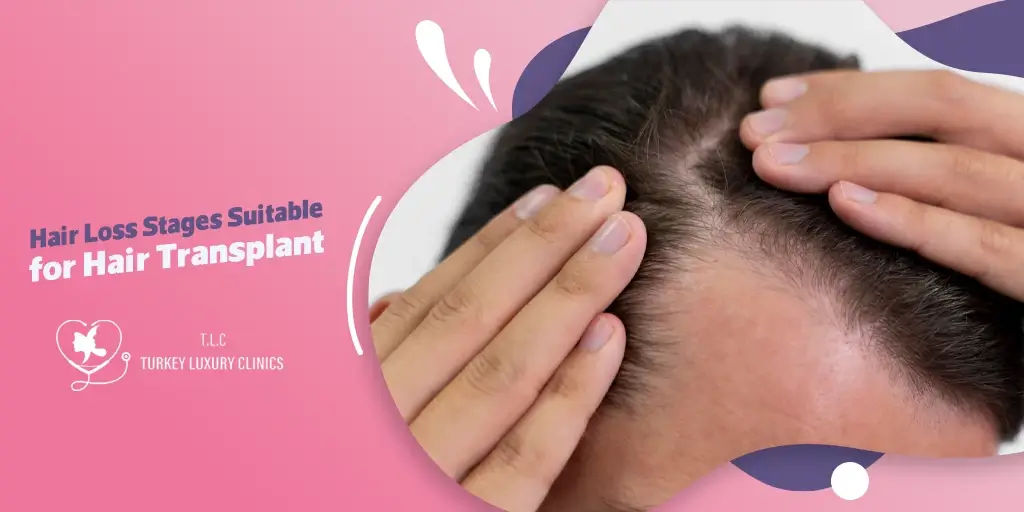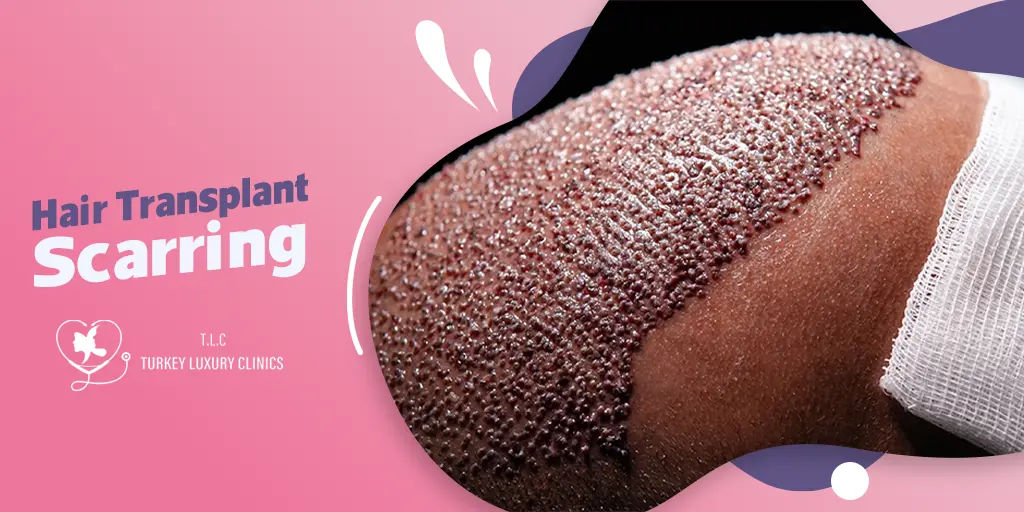- - Hair Transplant Density
- - Factors Affecting Hair Transplant Density
- - What is the Average Donor Hair Density?
- - Low Density vs. High Density Hair Transplant
- - Low Density Hair Transplant
- - High-density hair transplant
- - Does a Hair Transplant Increase Hair Density?
- - Second Hair Transplant for Density
- - Choose the clinic with top-notch surgeons
- - FAQs About Hair Transplant Density
It’s common to undergo a hair transplant to increase hair density and restore a fuller appearance. Hair transplant density plays a key role in achieving natural-looking results.
While natural hair density ranges from 100 to 120 follicles per cm², the donor area should ideally have around 80 to 100 follicles per cm² for successful extraction.
During transplantation, the recipient area typically receives 35 to 45 follicular units per cm²—an amount generally sufficient to achieve a natural and aesthetically pleasing outcome.
In this article, we explain what hair transplant density means, when it is ideal, and the key factors that influence both donor and recipient area density.
For a personalized consultation, feel free to contact us at Turkey Luxury Clinics, whether you're seeking advice about your current transplant or planning your first step toward fuller, natural-looking hair
Hair Transplant Density
Hair transplant density refers to the number of hair grafts implanted per square centimeter in the recipient area. It typically ranges from 35 to 45 follicular units per cm², which is generally sufficient to create a natural-looking and fuller appearance.
The maximum hair transplant density that can be safely achieved in most cases is around 50 to 60 grafts per cm².
However, implanting higher densities in a single session may compromise graft survival, as the scalp’s blood supply can only support a limited number of follicles at once.
This density is measured by counting the number of follicular units per square centimeter on the scalp—providing surgeons with a clear standard to plan the procedure effectively.
Factors Affecting Hair Transplant Density
Factors such as the availability of donor material, the quality of the transplanted hair, and the surgeon's technique can all affect the final density
1. Donor area quality and quantity
The density and thickness of hair in the donor area directly determine how many grafts can be harvested and how dense the final result can appear.
2. Hair characteristics
The texture, thickness, curl pattern, and even color of the hair affect how dense the transplant will look. For example, thick or curly hair (as in afro hair transplant) usually gives better coverage.
3. Recipient area condition
Scalp elasticity, thickness, and general skin health affect how well grafts can be implanted and how successfully they grow.
4. Surgeon’s skill and technique
The surgeon’s expertise, especially in using techniques like FUE, FUT, or DHI, plays a major role in maximizing graft survival and achieving natural-looking density.
5. Graft placement strategy
How grafts are placed—spacing, angle, and direction—significantly impacts both the appearance of density and the natural flow of hair.
6. Scalp laxity
A more flexible or “loose” scalp makes it easier to harvest and place grafts, potentially improving overall density outcomes.
7. recipient area blood supply
The blood supply in the recipient area plays a key role in graft survival and overall hair density. When too many grafts are packed into a limited space, the scalp’s circulation may be insufficient to nourish them all—leading to weak growth or graft failure.
8. Lifestyle factors
Smoking, poor diet, chronic stress, and certain medications can negatively impact healing and hair regrowth after the transplant.
9. Post-transplant care
Following hair transplant aftercare instructions—especially in the first few weeks—is crucial to protect the grafts and support healthy regrowth.
10. Age and hormonal factors
Age naturally affects hair thickness and density, while hormonal imbalances (such as high DHT levels) can influence ongoing hair loss or limit regrowth.
11. Donor hair supply
This depends on the density and size of the donor area, ultimately limiting how many grafts can be transplanted, especially in large or advanced balding areas.
What is the Average Donor Hair Density?
The average hair density in the donor area—typically located at the back and sides of the head—is around 80 to 100 follicles per cm².
To be considered a good candidate for hair transplantation, a person usually needs a minimum donor hair density of 80 follicles per cm².
Low Density vs. High Density Hair Transplant
In hair transplantation, low density means implanting a smaller number of grafts per square centimeter, resulting in a lighter, more conservative result.
High density, on the other hand, involves placing a greater number of grafts in a concentrated area to create a fuller and more natural look.
The choice between low and high-density transplantation depends on several factors, including the extent of hair loss, aesthetic goals, and the availability and quality of donor hair.
Low Density Hair Transplant
A low-density hair transplant refers to a procedure where the transplanted hair follicles result in a final appearance with hair transplant not dense enough.
In a low-density hair transplant, the hair appears sparse, with visibly thin coverage in the treated area—often leaving parts of the scalp exposed.
You can’t determine whether your hair transplant lacks sufficient density until the full results appear. In the early stages—especially during the shock loss phase and the first few months of recovery—it may seem like the hair is not dense enough.
But hair growth is gradual, and the final density typically becomes visible between 12 and 18 months post-transplant.
If there’s still no noticeable improvement after that period, it may be time to consult your surgeon and explore additional options to enhance density.
But hair growth is gradual, and the final density typically becomes visible between 12 and 18 months post-transplant.
If there’s still no noticeable improvement after that period, it may be time to consult your surgeon and explore additional options to enhance density.
What Are the Reasons for Low Hair Density After a Transplant?
- Your surgeon made promises that were unrealistic, resulting in your disappointment with the final hair density
- The hairline drawn by your surgeon is not realistic or appropriate
- Graft rejection or Low graft survival rates
- Inadequate aftercare.
- Inappropriate surgical technique.
- The surgeon attempted to place an excessive number of grafts into a hair transplant on scar tissue.
Other medical factors can also impact final density, such as DHT sensitivity, which may continue to thin the surrounding native hair, or infections that damage the scalp and affect graft survival. Additionally, conditions like telogen effluvium—a temporary shedding triggered by stress—and chronic illnesses such as thyroid disorders or anemia can interfere with healthy hair regrowth.
High-density hair transplant
A high-density hair transplant involves grafting 60 or more follicular units per square centimeter. The goal of packing a larger number of grafts into a smaller area is to closely mimic the natural density of non-balding areas.
Dense packing hair transplant is especially used in the frontal hairline, aiming for a higher density appearance to achieve a fuller, more natural-looking result in a single procedure.
This technique requires significant skill and experience from the surgeon and team due to the intricate nature of placing grafts in close proximity while ensuring their survival and proper angle for a natural flow
Why Choose High-Density Transplantation?
In recent years, researchers have explored the possibility of increasing hair transplant density by packing more hair grafts into a smaller area, with the aim of enhancing the final results.
A high-density hair transplant is an effective solution that can yield excellent results. A study revealed that grafts with greater density exhibited superior survival and growth rates compared to those with lower density PubMed.
High density hair transplant is not just about adding more grafts—it’s about doing it right.
While high-density hair transplantation offers impressive results, its success depends entirely on the surgeon’s expertise. Poor technique is one of the leading causes of graft failure.
Therefore, instead of focusing solely on achieving maximum hair transplant density, patients should prioritize choosing a skilled, experienced surgeon with a strong track record in advanced hair restoration.
Does a Hair Transplant Increase Hair Density?
Yes, it is very effective to get a hair transplant to increase density, by transferring hair follicles from denser areas of the scalp (donor area) to thinning or balding areas (recipient area) .
The procedure can create a fuller, thicker appearance, even if it doesn't fully restore the original density.
A recent study of multiple hair transplant patients revealed that surgeons achieved a mean density of 50 hair grafts per cm² with FUE hair transplantation and 75 grafts per cm² with Direct Hair Implantation (DHI).
Additionally, some individuals opt for a hair transplant to achieve a fuller buzzcut, particularly if they intend to regrow their hair.
In light of these findings, surgeons can conclude that increasing hair density is an effective solution for patients with hair loss issues.
Consequently, those experiencing thin hair are strongly encouraged to pursue hair transplant procedures.
Second Hair Transplant for Density
A second hair transplant to add density is a good option for individuals who are not satisfied with the results of their initial transplant procedure, particularly if they experienced continued hair loss or insufficient density. However, patients should wait until the final result of the first hair transplant is visible, at least 6-12 months after the first procedure.
Can a second hair transplant improve hair density?
Yes, according to recent data, 32% of hair transplant patients undergo more than one procedure to add density and achieve their desired results.
Eligibility for a second hair transplant
To be eligible for 2nd hair transplant density procedure you need sufficient donor hair, a donor density of at least 40 follicular units per cm², scalp laxity, and the stabilization of hair loss
Choose the clinic with top-notch surgeons
At Turkey Luxury Clinics, we have more than 22 years of experience providing second-to-none hair transplants with a perfect success rate. Here is why you should choose Turkey Luxury Clinics instead of many others in Turkey:
- Professional medical consultation is provided by a qualified team of surgeons.
- Your transportation in Istanbul is our responsibility.
- Medical examination and complete preparation for surgery.
- Medical health consultants for assistance and interpretation.
- Regular follow-ups and remote recovery support
Contact us today to learn more about our safe, natural-looking hair transplant procedure, designed to restore your hair.












.webp)
.webp)
.webp)
.webp)

